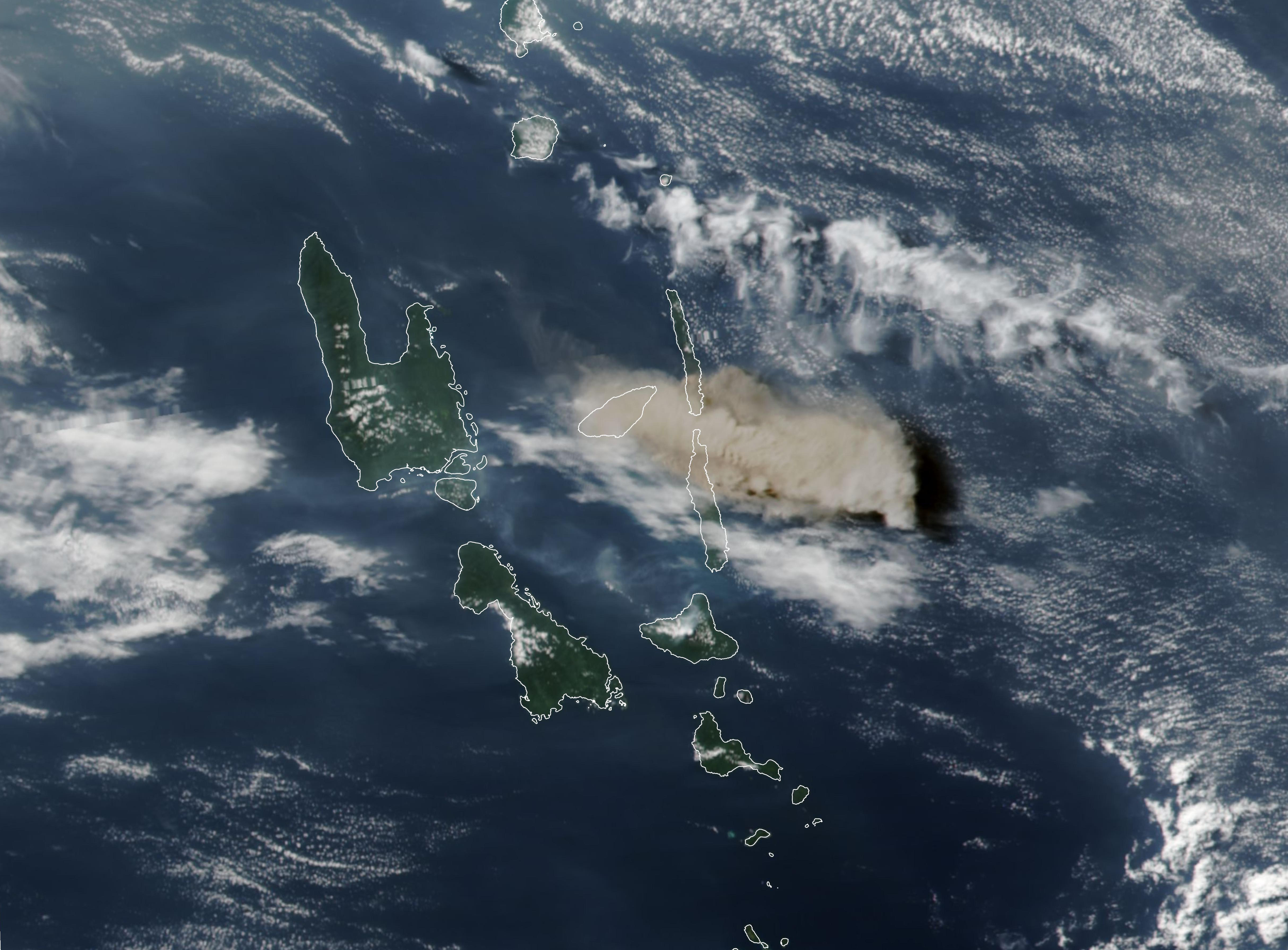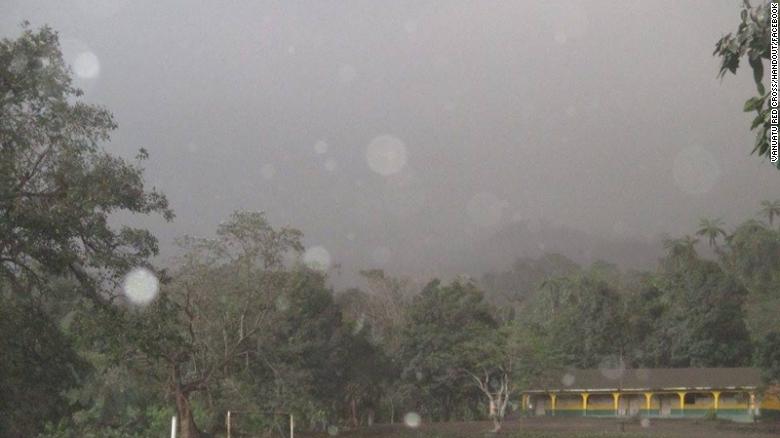[:ja]NASAの地球観測衛星Suomi NPPが撮影したバヌアツ、アオバ島(アンバエ島)のマナロ火山の噴火の様子です。

画像は2018年7月27日に撮影されました。地中からの大量のエネルギーがガスと灰を対流圏(~10km)と成層圏(10~50km)まで巻き上げます。1991年のフィリピンのピナツボ火山噴火のようなケースでは、噴火で成層圏に放出された大量の待機エアロゾル粒子が全休規模の硫酸エアロゾル層を形成し、何か月も残留。その結果、地球の気温が約0.5度下がり、オゾン層の破壊も著しく進みました。今回のアオバ島の噴火はそこまでの影響はありません。
地上の様子はこちらです。

参考文献: The Biggest Eruption of 2018 Was Not Where You Think (NASA Earth Observatory)
地球俯瞰画像を見る: LiVEARTH
[Earthview Wonders] No.714: Ambae Eruption, Vanuatu🇻🇺
NASA’s Suomi NPP satellite captured the eruption of Manaro Volcano, Ambae, Vanuatu.

The photo captured on July 27, 2018 shows that a powerful burst of energy pushed gas and ash into the upper troposphere and stratosphere. In extreme cases, like the 1991 eruption of Mount Pinatubo, the tiny aerosol particles can scatter so much sunlight that they cool Earth’s surface below. The Ambae eruption was too small to cause such cooling.
The local scenery on the ground is as follows.

Reference: The Biggest Eruption of 2018 Was Not Where You Think (NASA Earth Observatory)
See earthview photo gallery: LiVEARTH[:en][Earthview Wonders] No.714: Ambae Eruption, Vanuatu🇻🇺
NASA’s Suomi NPP satellite captured the eruption of Manaro Volcano, Ambae, Vanuatu.

The photo captured on July 27, 2018 shows that a powerful burst of energy pushed gas and ash into the upper troposphere and stratosphere. In extreme cases, like the 1991 eruption of Mount Pinatubo, the tiny aerosol particles can scatter so much sunlight that they cool Earth’s surface below. The Ambae eruption was too small to cause such cooling.
The local scenery on the ground is as follows.

Reference: The Biggest Eruption of 2018 Was Not Where You Think (NASA Earth Observatory)
See earthview photo gallery: LiVEARTH[:]